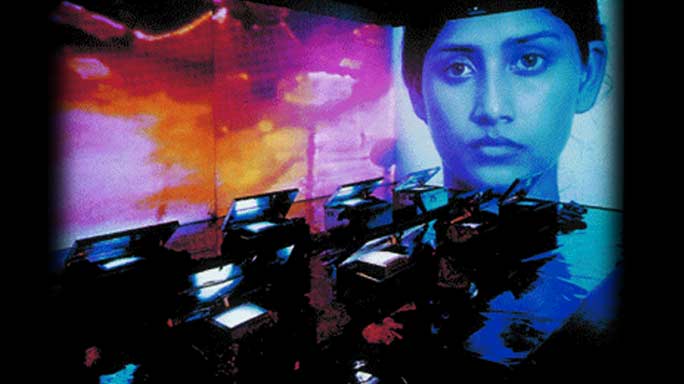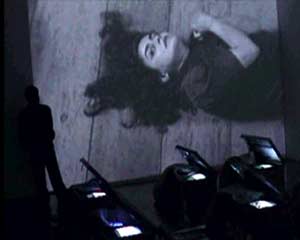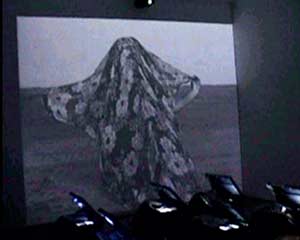 |
 |
 |
 |
 |
 |
 |
|
| Remembering
Toba Tek Singh Video Installation, 20 minutes looped, sound, 1998-99 |
| Inspired
by "Toba Tek Singh", a short story by Sa 'adat Hassan Manto. The video installation traces the painful, horrific and absurd journey of violence beginning with the splitting of India into two countries, India and Pakistan, in 1946 to the aggressive posturing that led to the nuclear tests in 1998. The work was made in response to the underground nuclear tests in India on 11 May, 1998, a significant day on the Buddhist calender. |
 |
| The large central
projection consists of a single cell animation drawing by the artist, montaged
and layered with archival material of 'Little Boy' and 'Fat Man', the American
bombs that killed millions of people in Hiroshima and Nagasaki during the
World War II. The installation works as a video triptych. Two videos depicting
two women face each other across the expanse of a room that has tin trunks
containing monitors and bedding placed in a grid formation. These are the
kind of trunks used by refugees to carry all their wordly possessions. The images on the monitors in the trunks depict people torn away from their homelands, crossing borders, rioting, suffering. Many of these video images are taken from archival material from several countries. This installation presents the cleaving of countries and the irrational, inhuman use of technology. Victoria Lynn, Catalogue Text, 'Voiceovers' 1999, Art Gallery of New South Wales, Australia |
 |
|
Solo exhibition at the Coomaraswamy Hall, Prince of Wales Museum, Bombay.
|
 |
| copyright
© 2004 Nalini Malani |
